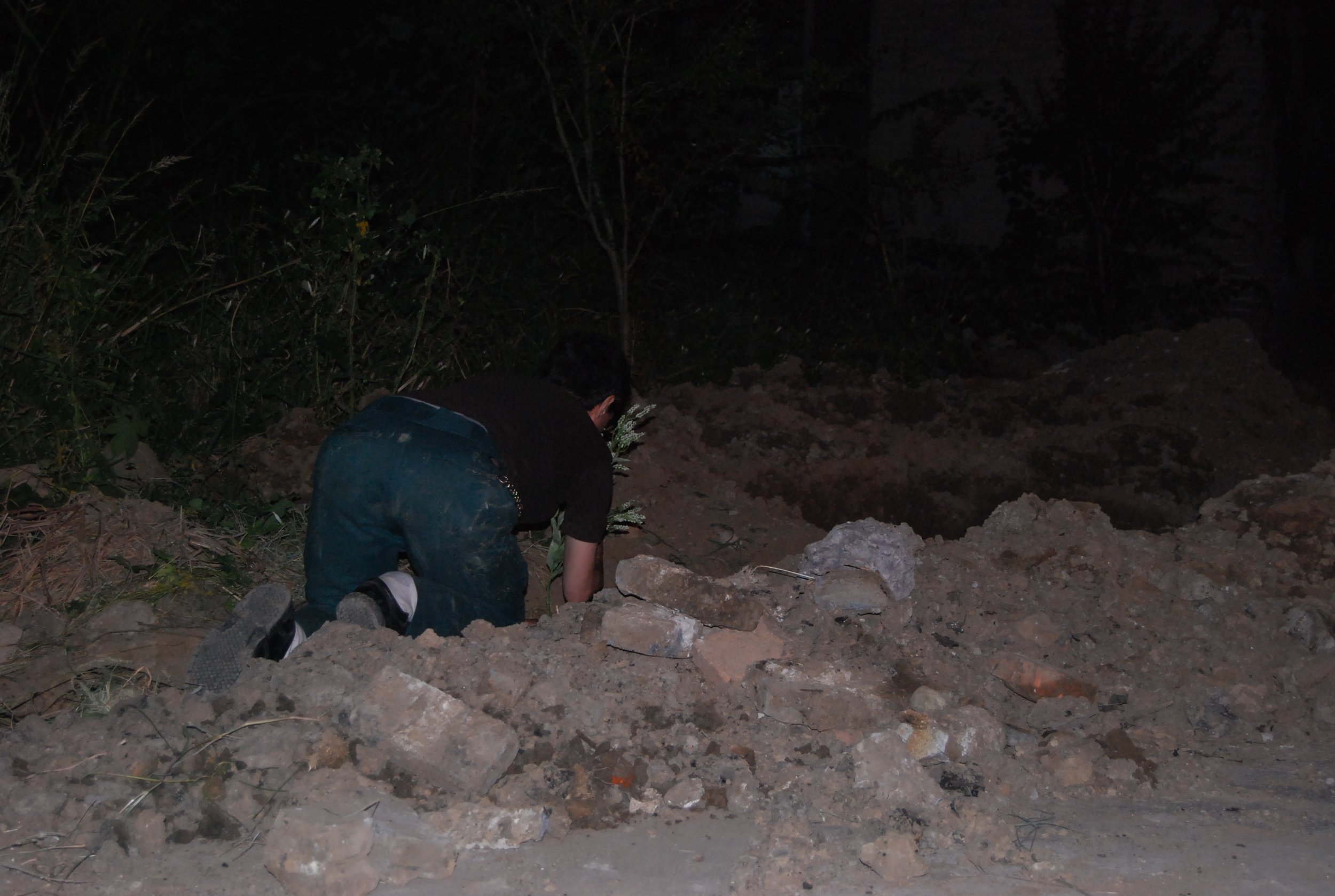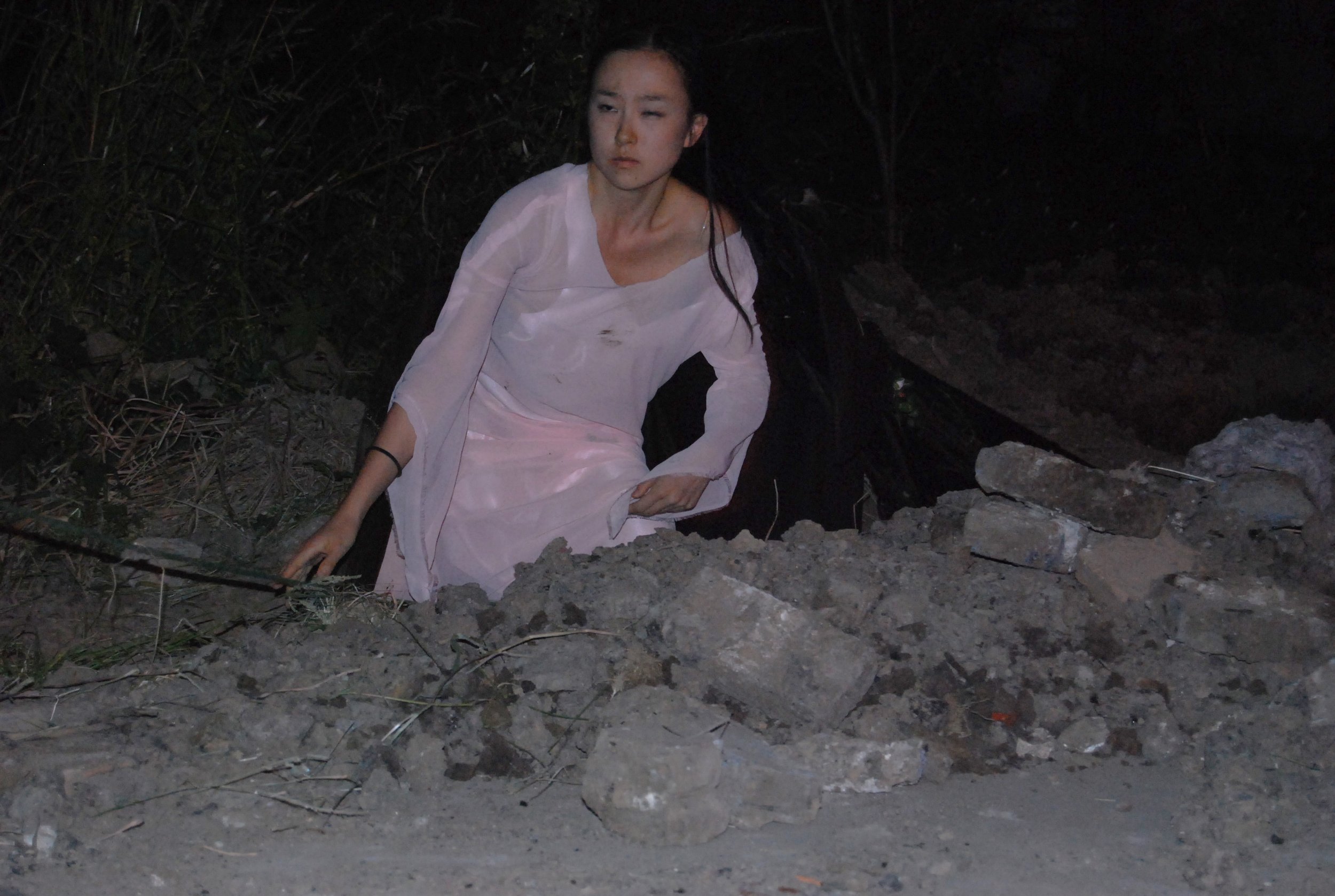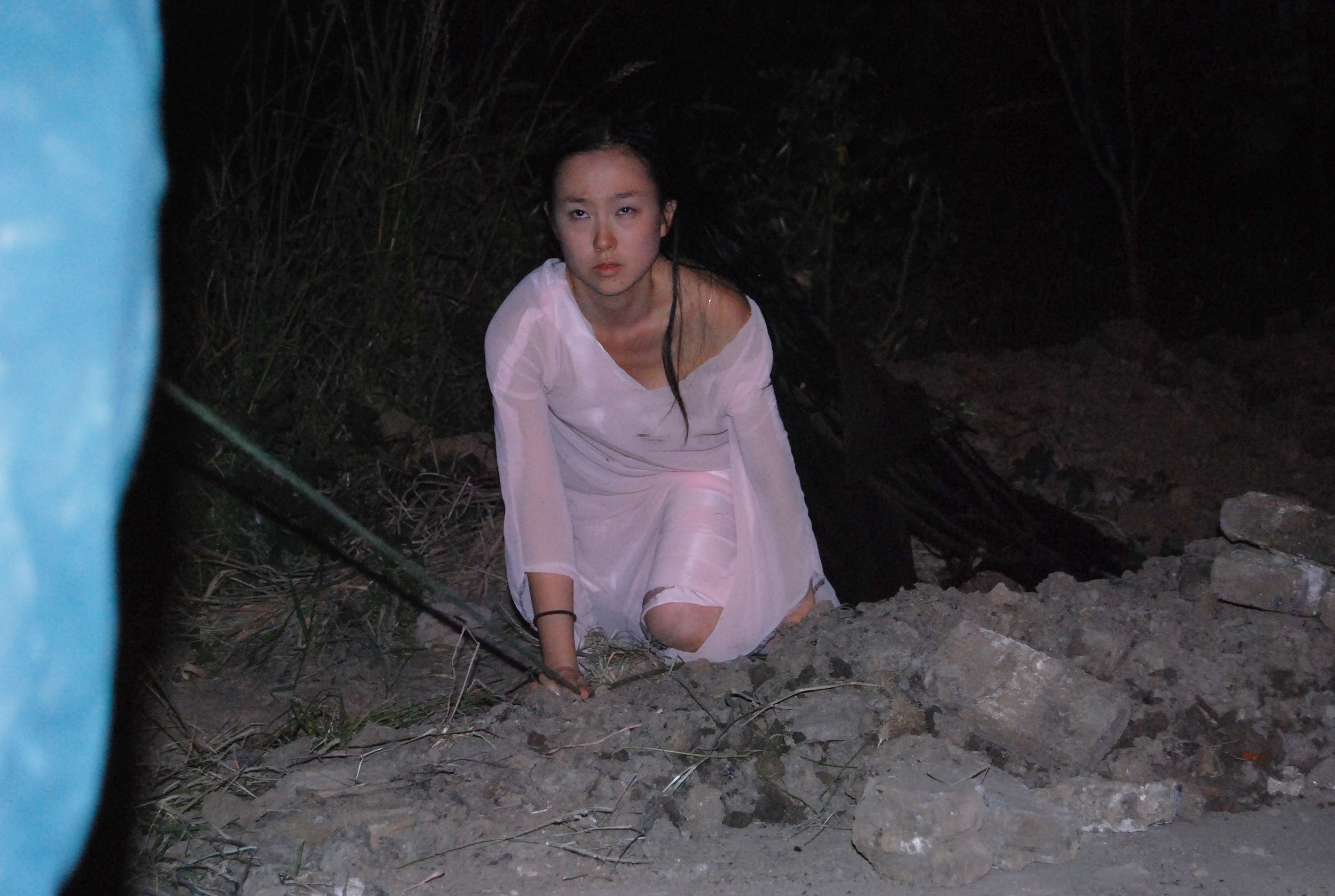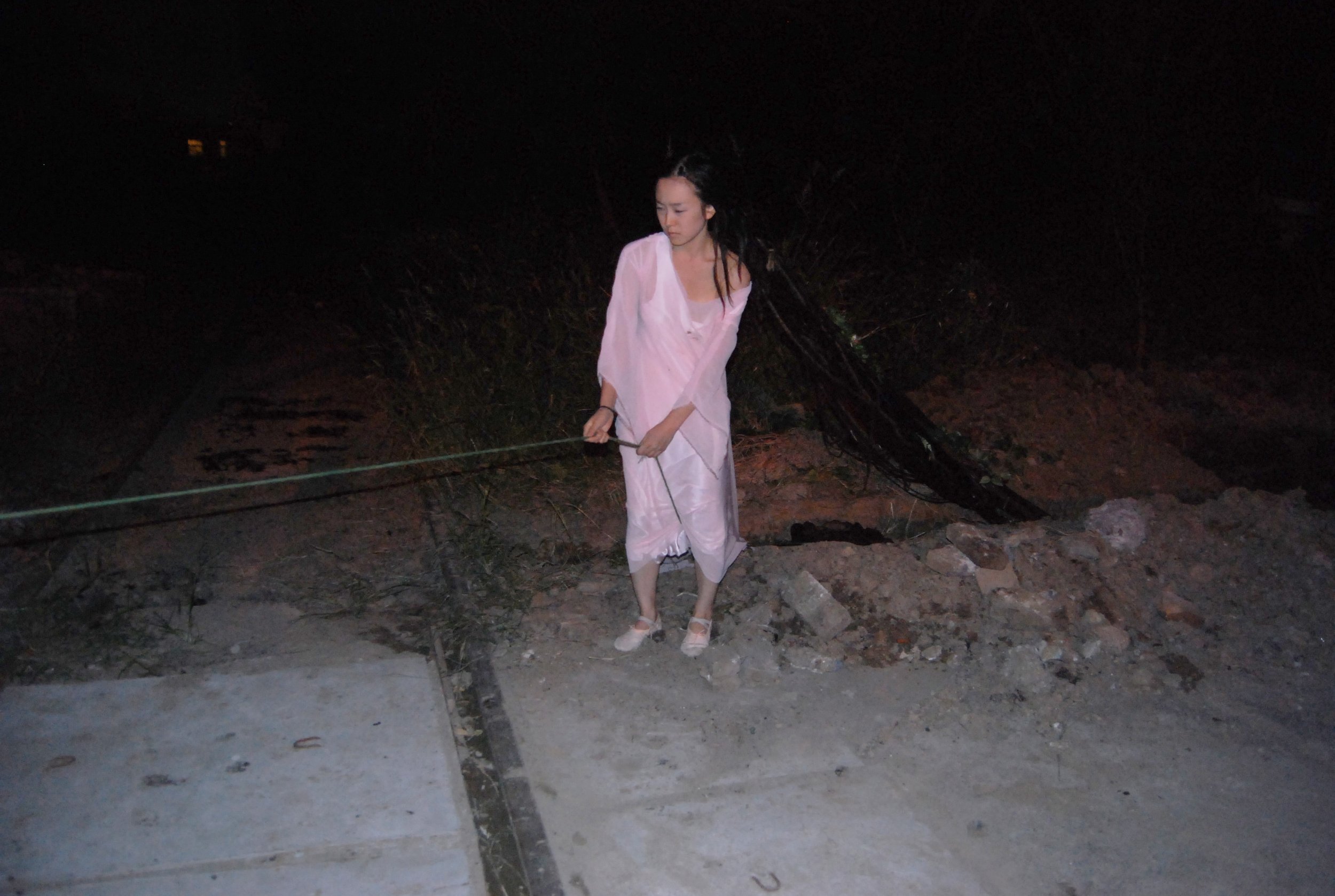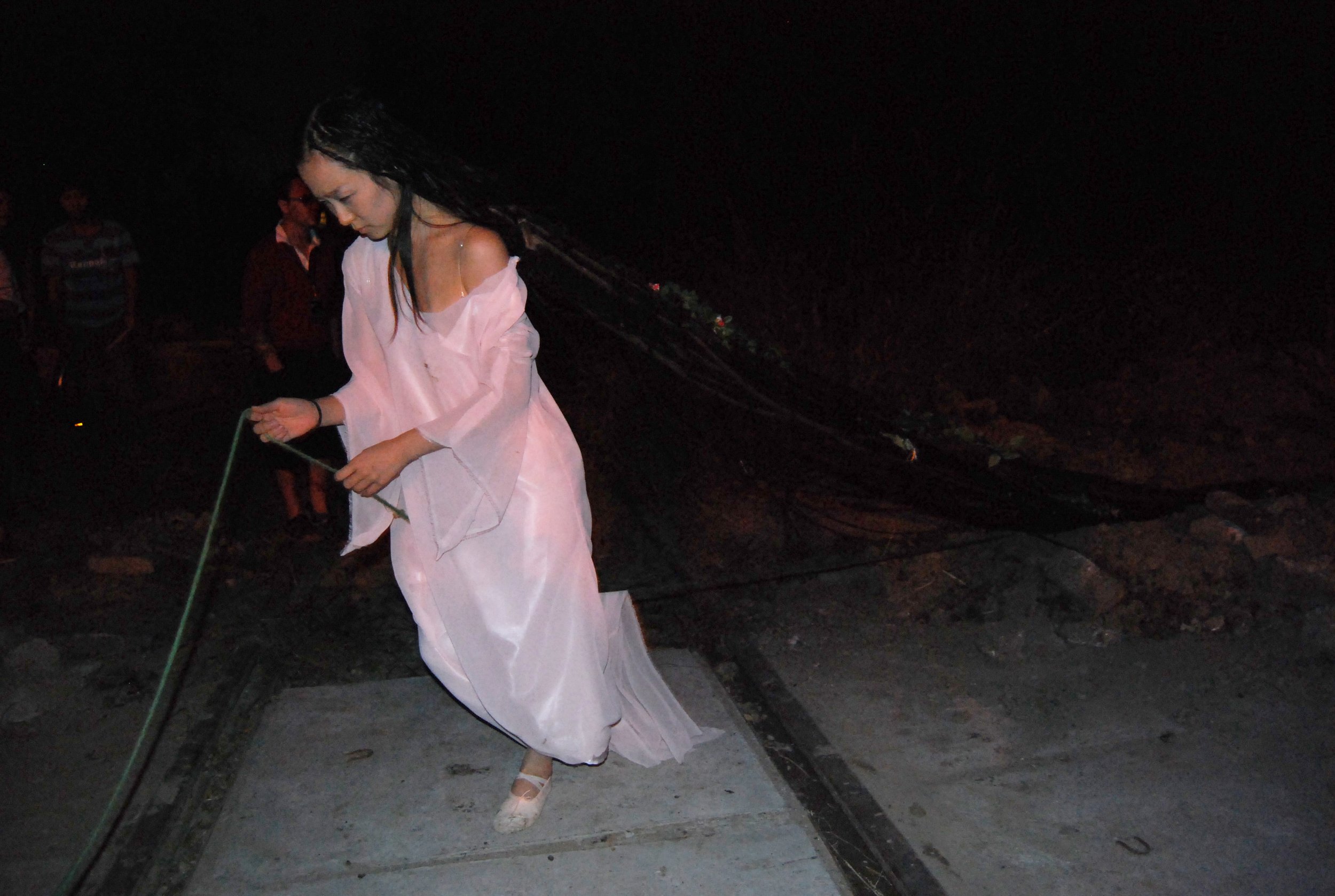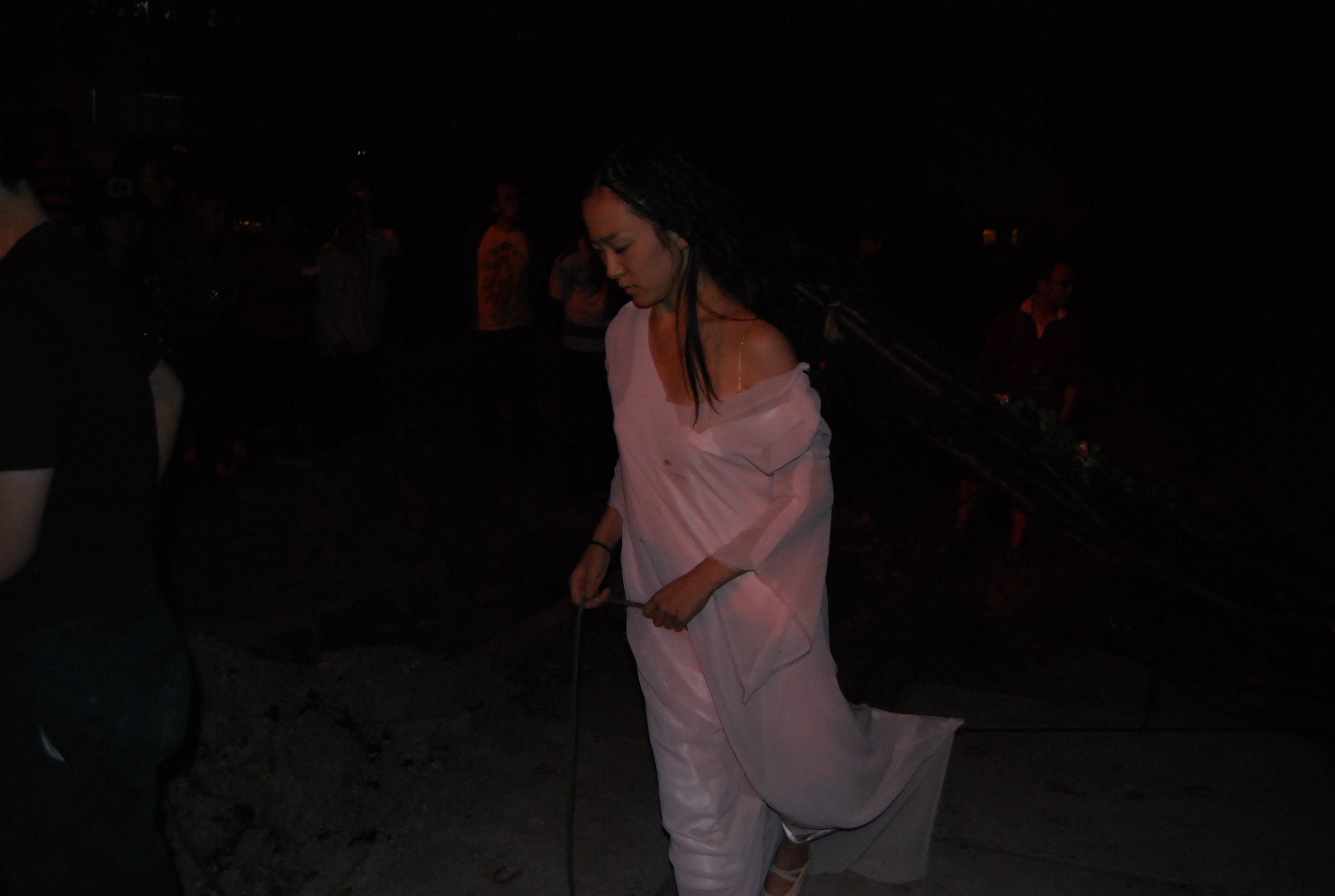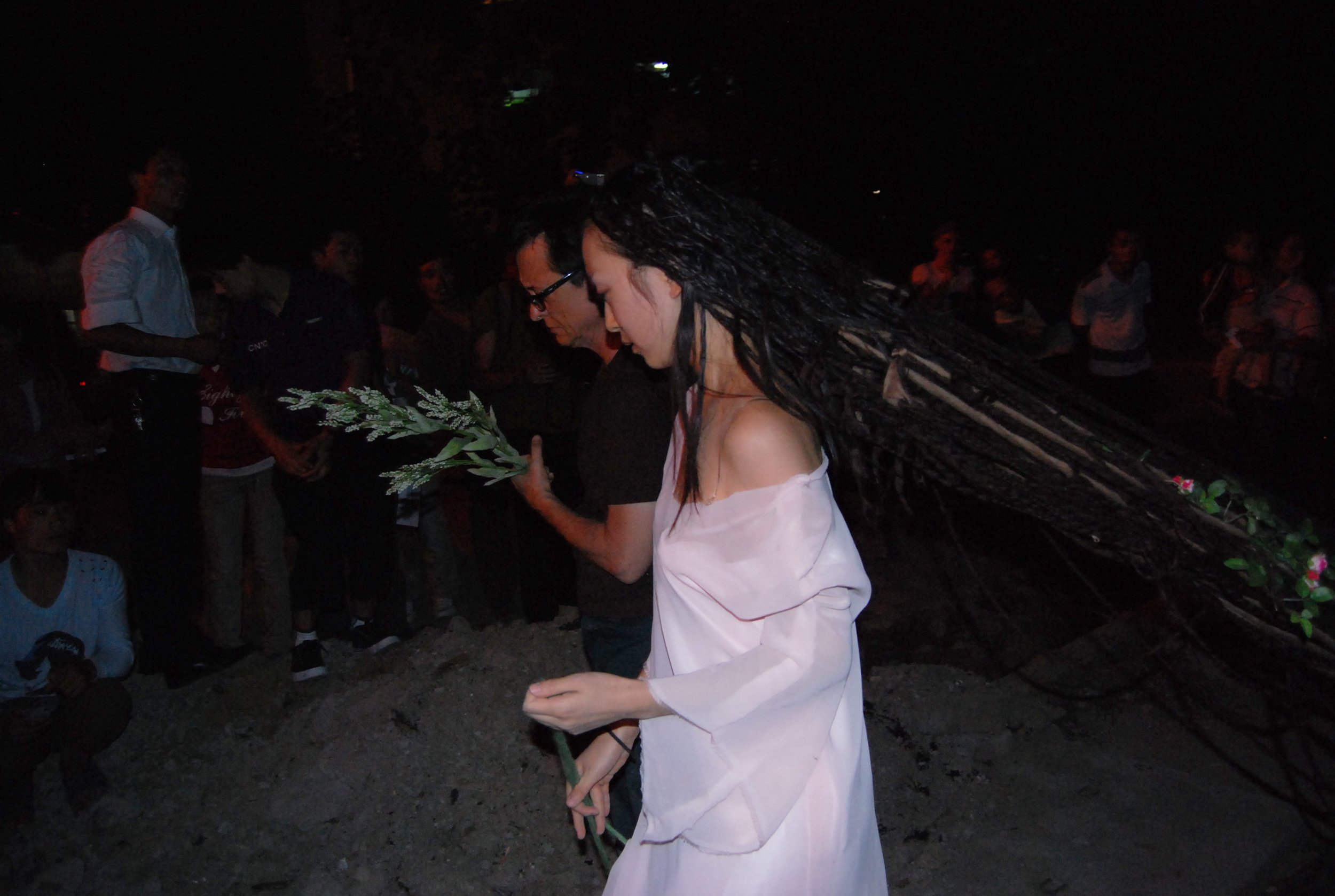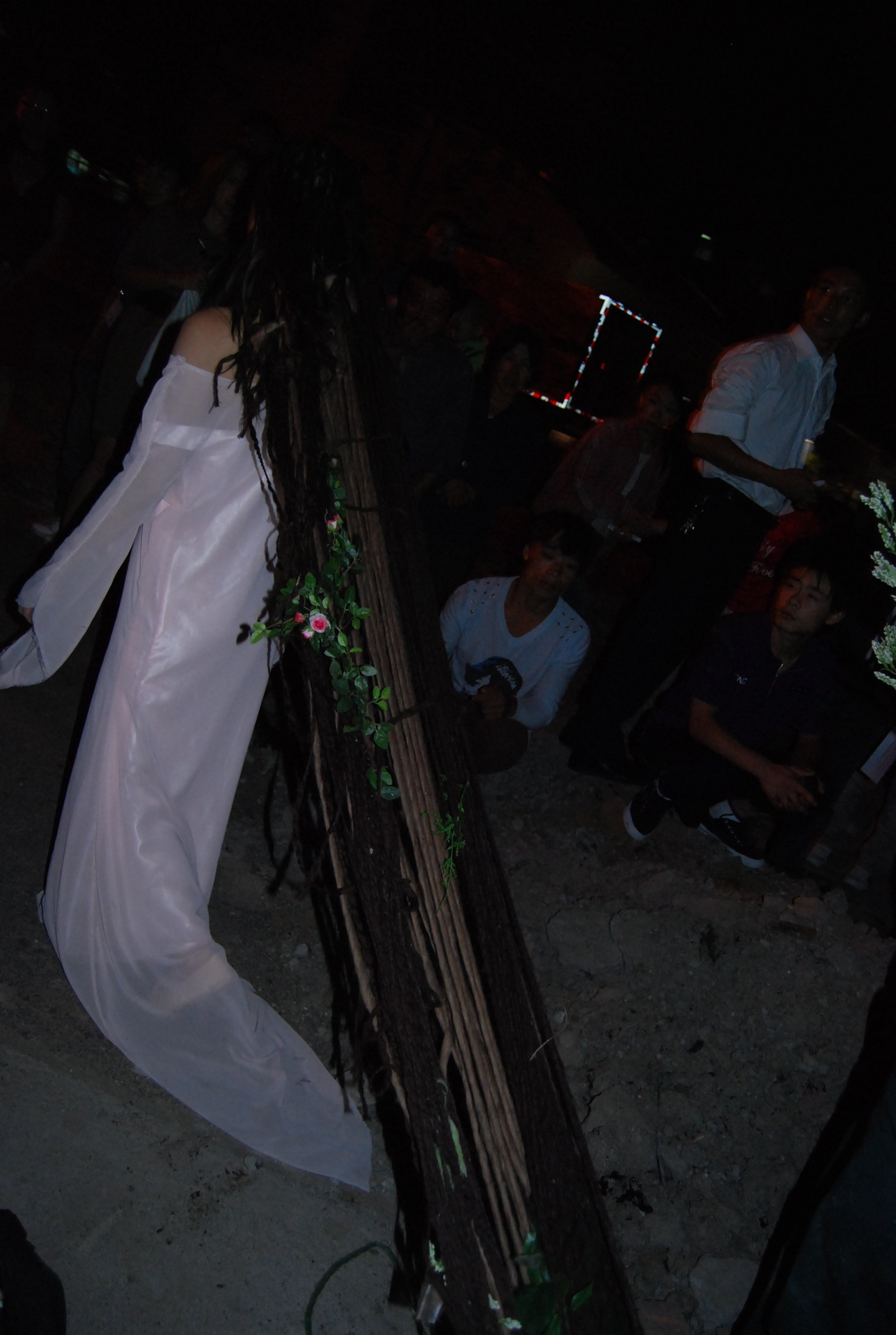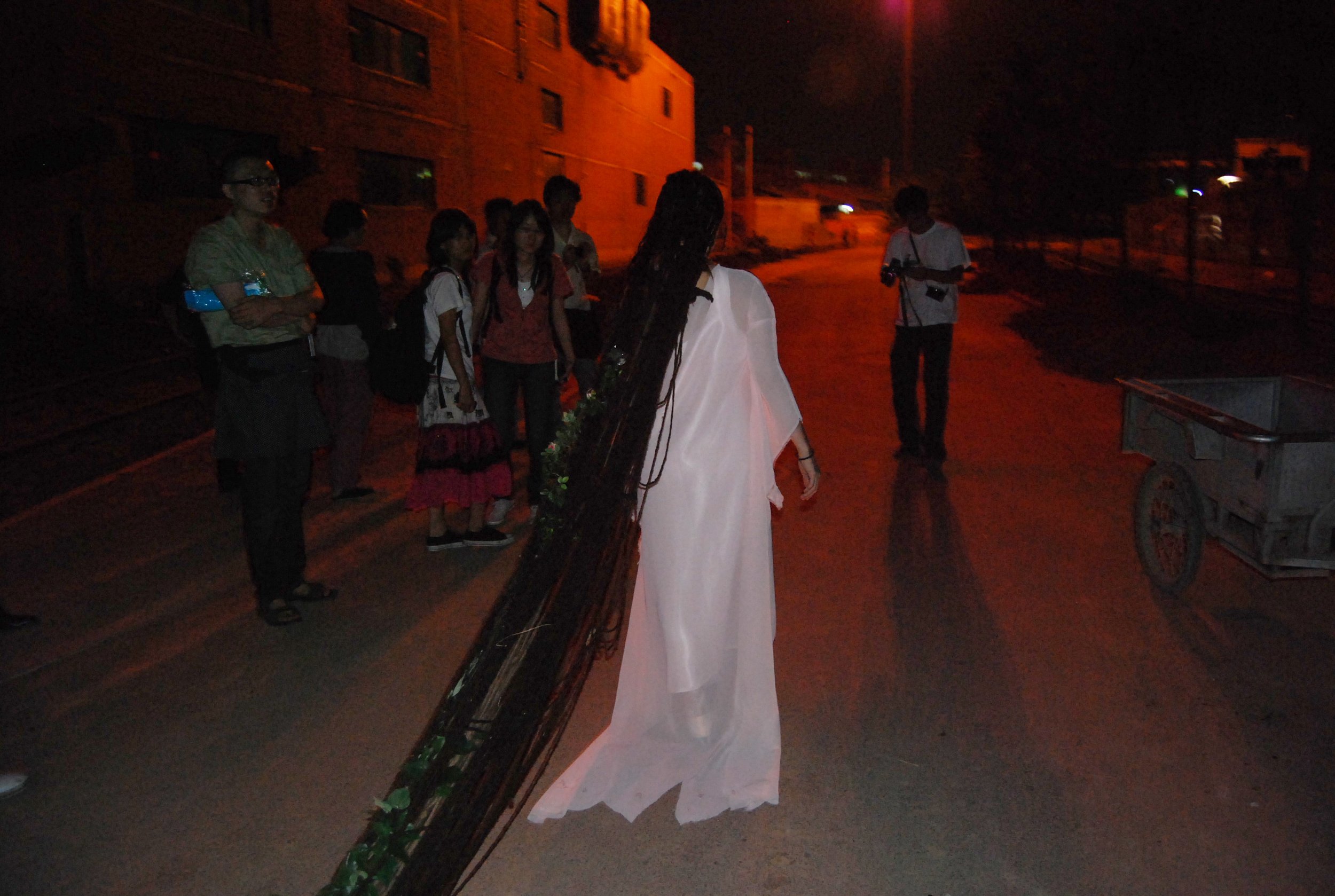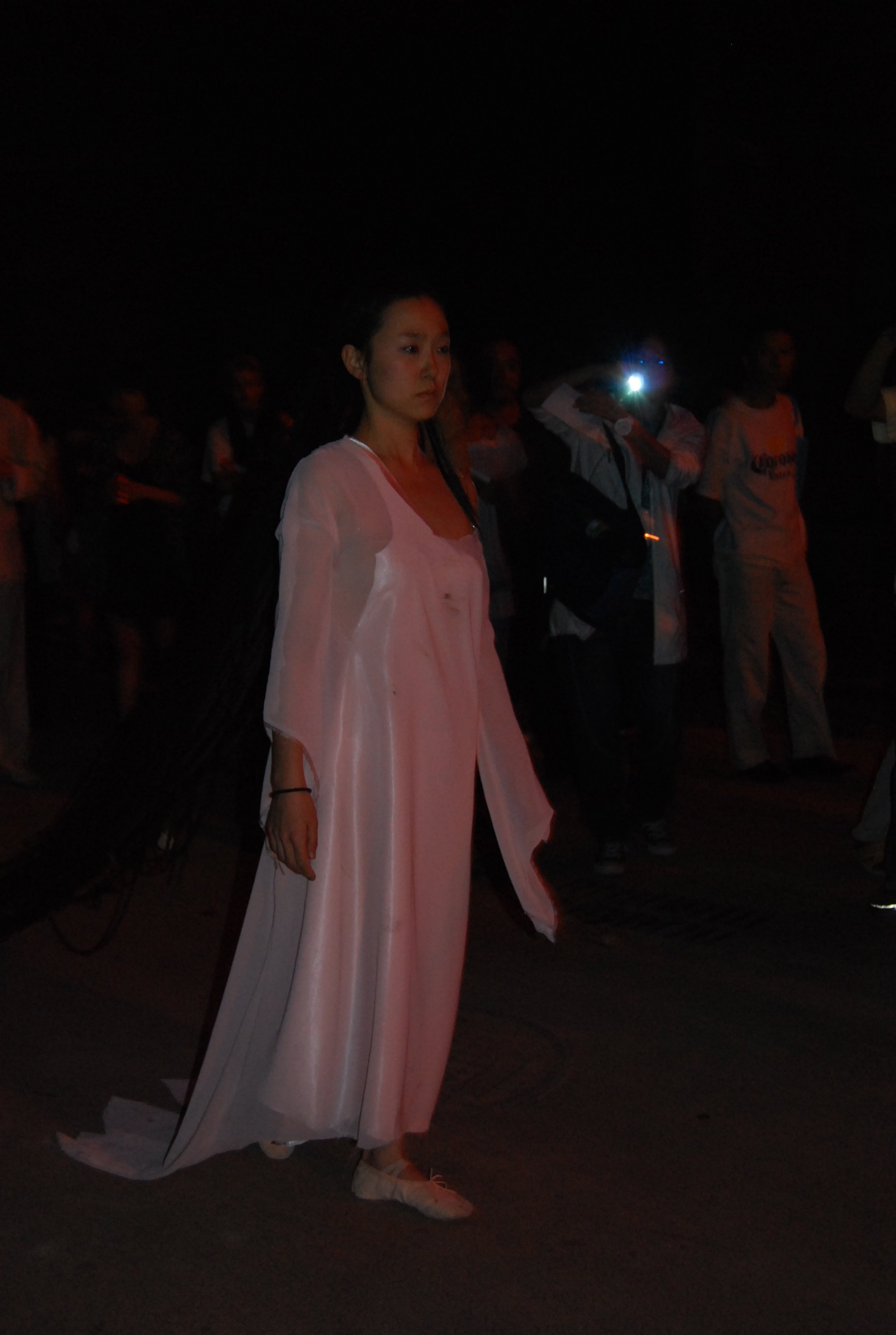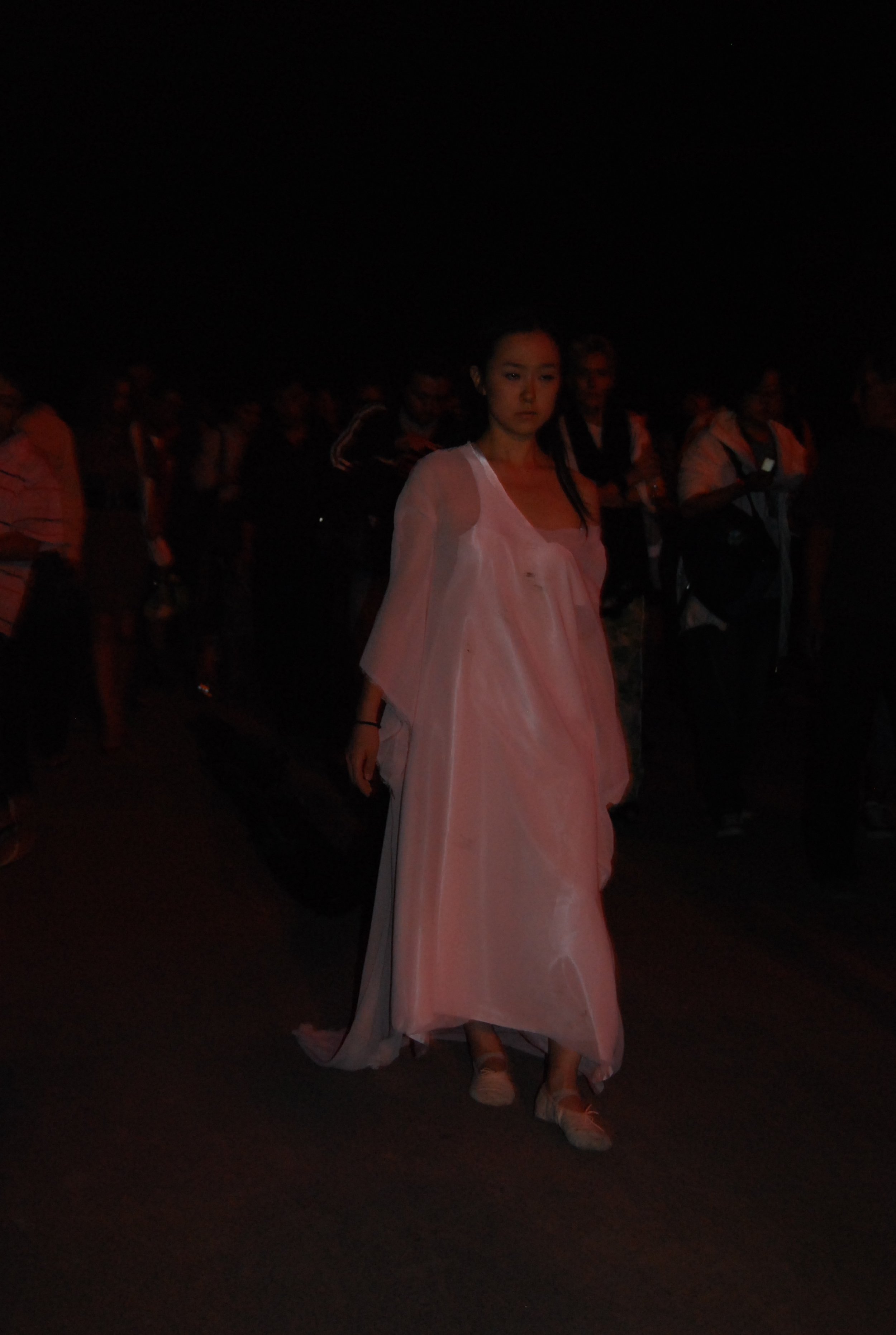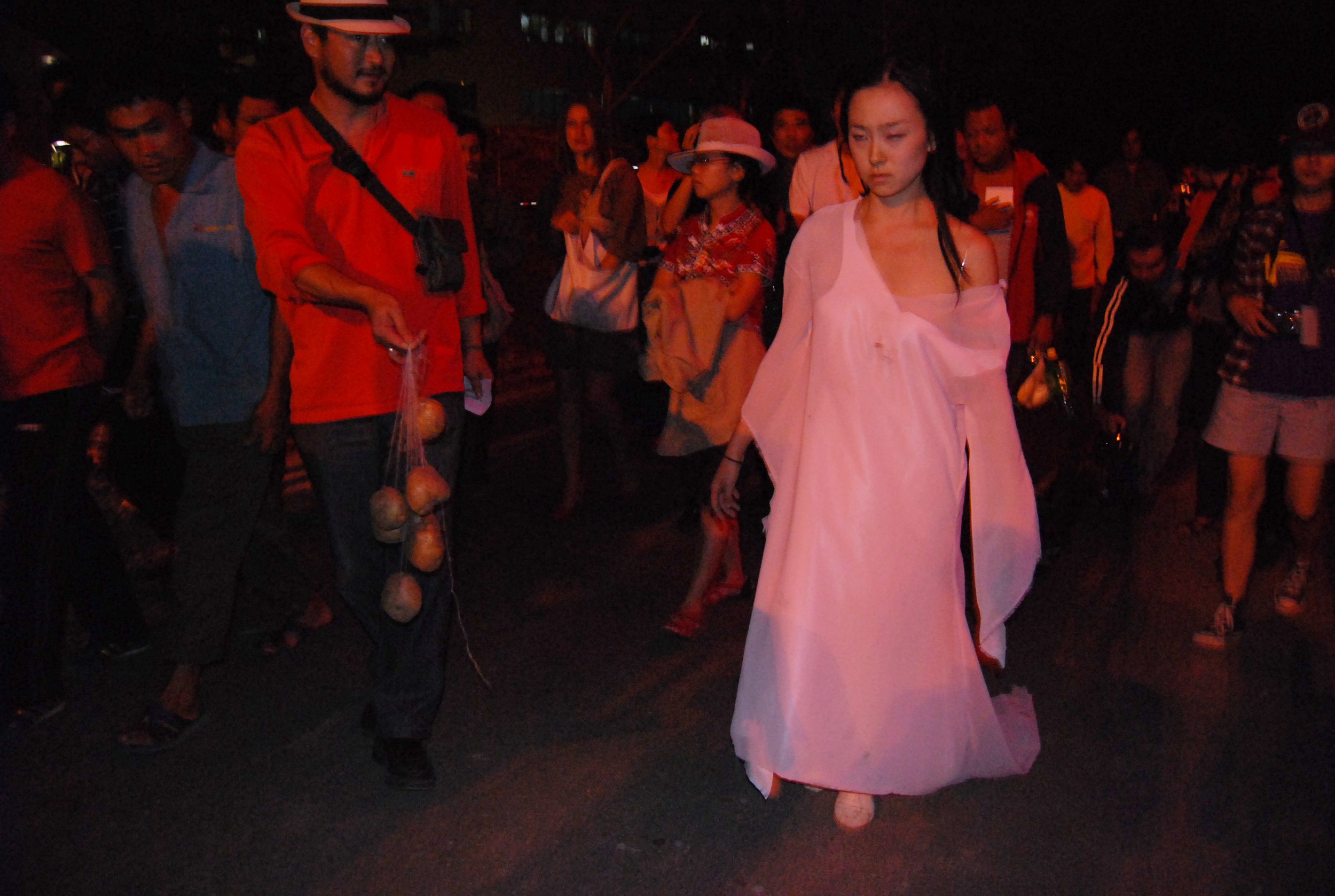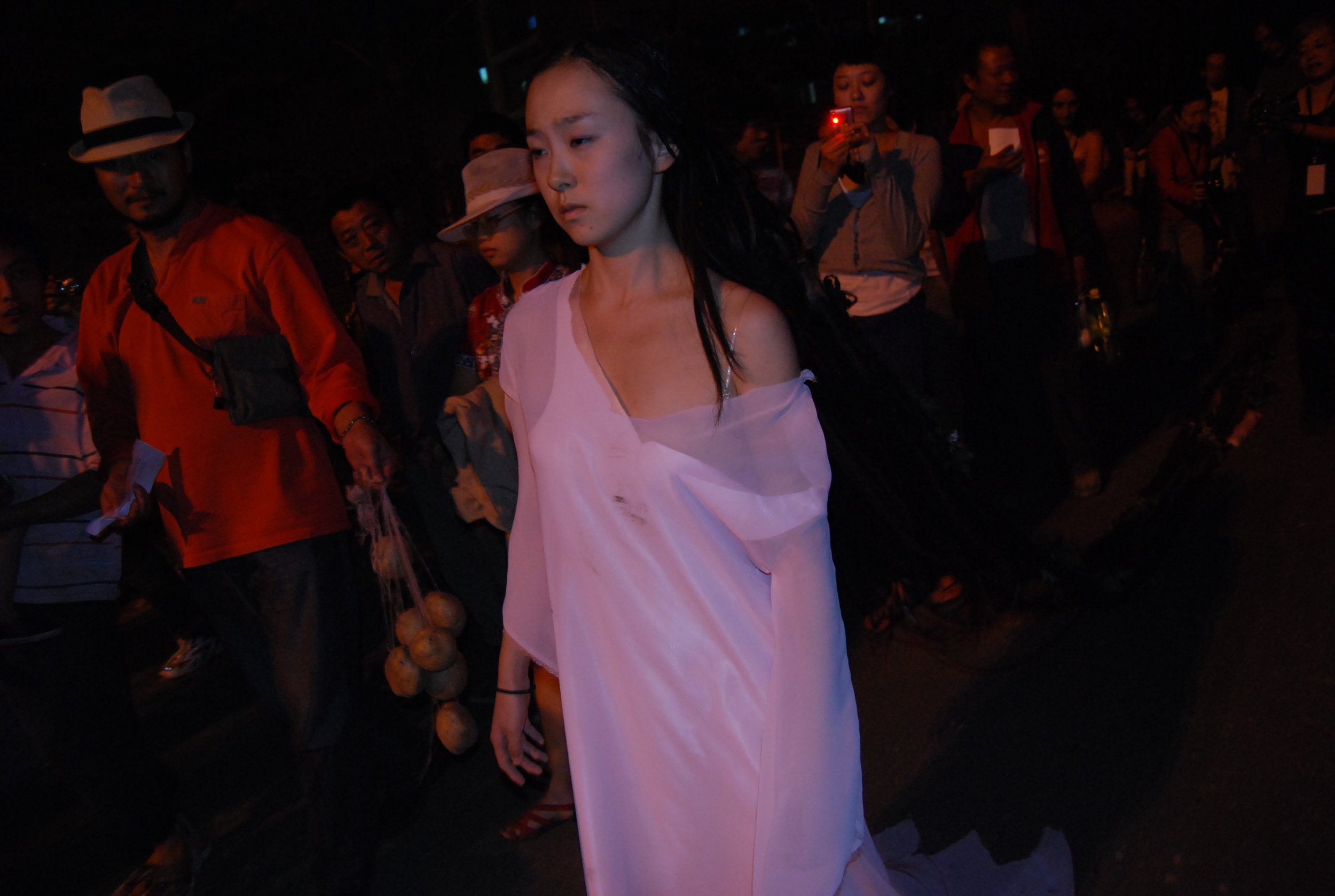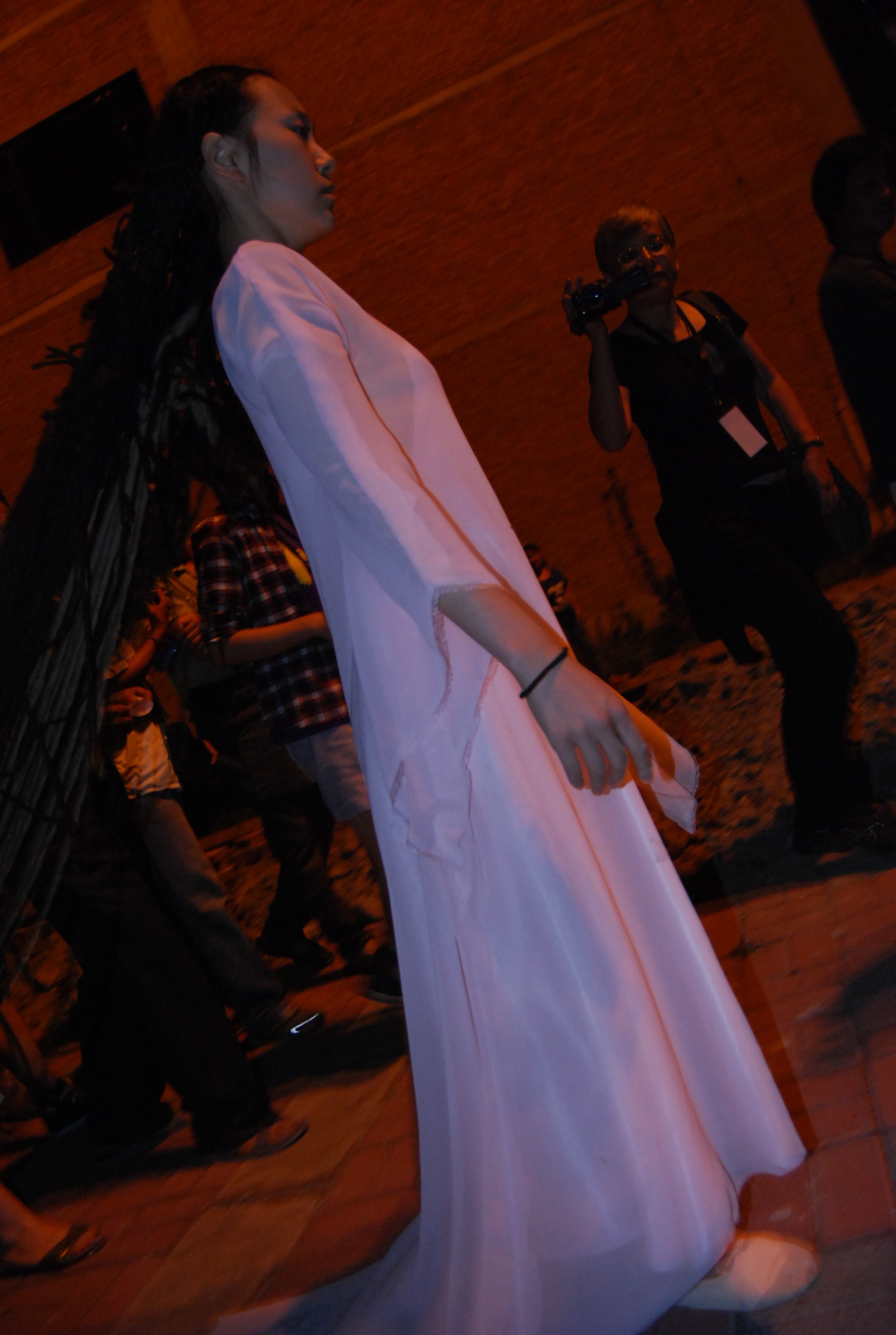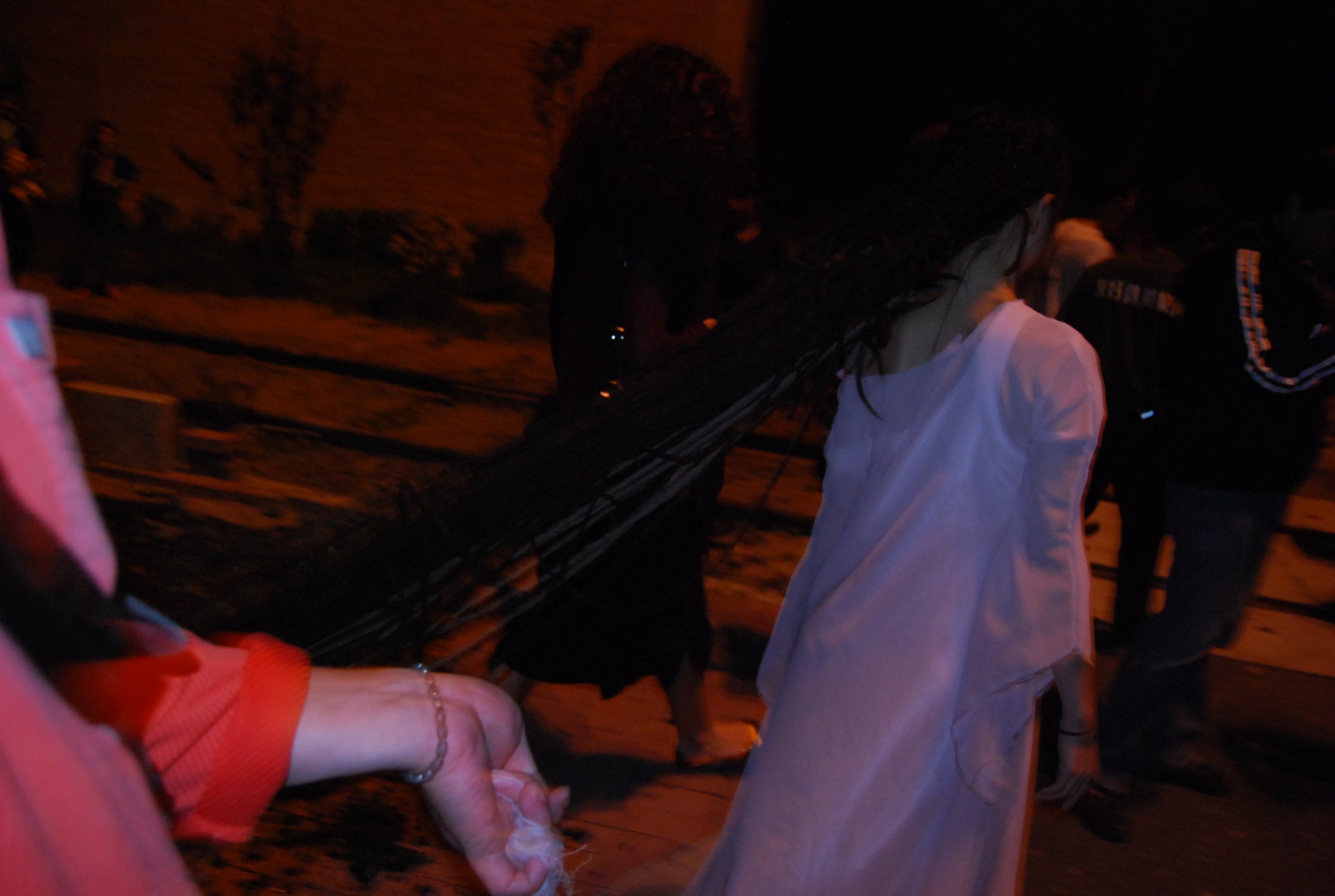Vegetation
2009, Performance,
Beijing 798 Art district
*Following text was handed out to the audience before the performance
The harvested potatoes were gigantic. But we didn’t feel like eating them as they had thrived from consuming the flesh and blood of the hundreds of dead bodies dumped on the fields
vegetation narrative:
A man is mourning in front of a white flower. The site is the place where his
Lover was killed and buried during the massacre. He comes once in a while when he thinks of her because he cannot forget her.
He noticed the white flower. For him, the flower looks like his lover and her reincarnation. he decided to take the flower home.
When he picks the flower, he cannot go forward at some point anymore. (The flower is still connected to the ground through the string tied to the bottom.) He pulls it further to go forward and it is not easy. He pulls it strongly. Then suddenly, the tension is released and he feels something. He strongly feels something, but he cannot see her.
Inspiration
I was inspired by the novel based on the Cheju massacre.
In the story, there is a scene where the farmers have a rich harvest of potatoes from the field, in which anonymous dead bodies were buried in the previous years.
I was kept thinking of the massacre and its effect on people. Their dead bodies decomposed with the support of minor creatures, and became the nutrition of the vegetation on the earth, reborn as grass, flowers, trees, crops, and fruits. Other animals eat them.
In a literal sense, the spirit of the dead did not die. Her hair kept growing in the ground. By the trigger of her lover who is in mourning, she reappears on the ground and walks around on the earth. She appears and disappears on the edge of life and death.
